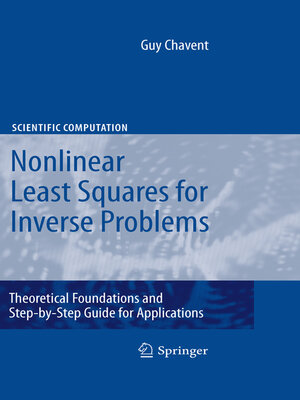Nonlinear Least Squares for Inverse Problems
ebook ∣ Theoretical Foundations and Step-by-Step Guide for Applications · Scientific Computation
By Guy Chavent

Sign up to save your library
With an OverDrive account, you can save your favorite libraries for at-a-glance information about availability. Find out more about OverDrive accounts.
Find this title in Libby, the library reading app by OverDrive.



Search for a digital library with this title
Title found at these libraries:
| Library Name | Distance |
|---|---|
| Loading... |
The domain of inverse problems has experienced a rapid expansion, driven by the increase in computing power and the progress in numerical modeling. When I started working on this domain years ago, I became somehow fr- tratedtoseethatmyfriendsworkingonmodelingwhereproducingexistence, uniqueness, and stability results for the solution of their equations, but that I was most of the time limited, because of the nonlinearity of the problem, to provethatmyleastsquaresobjectivefunctionwasdi?erentiable....Butwith my experience growing, I became convinced that, after the inverse problem has been properly trimmed, the ?nal least squares problem, the one solved on the computer, should be Quadratically (Q)-wellposed,thatis,both we- posed and optimizable: optimizability ensures that a global minimizer of the least squares function can actually be found using e?cient local optimization algorithms, and wellposedness that this minimizer is stable with respect to perturbation of the data. But the vast majority of inverse problems are nonlinear, and the clas- cal mathematical tools available for their analysis fail to bring answers to these crucial questions: for example, compactness will ensure existence, but provides no uniqueness results, and brings no information on the presence or absenceofparasiticlocalminimaorstationarypoints....







